Rowan Hall
Introduction
Text-to-speech Audio
Rowan Hall was the location for Miami University's Naval Science Department and was constructed in 1949. The building was named after Stephen Clegg Rowan, who went to Miami University from 1825-1826, and was the first graduate student to attend the Naval School in Annapolis. While he was in the Navy he participated in the Seminole War, Mexican-American War, and the Civil War. Millett Hall took over the Naval Science Department responsibilities in 1970. In 2011, Rowan Hall was renovated and became part of the new student union, Armstrong Student Center. On April 15, 1970, the Rowan Hall Takeover took place.
Images
Students in Rowan Hall During Student Takeover, April 1970
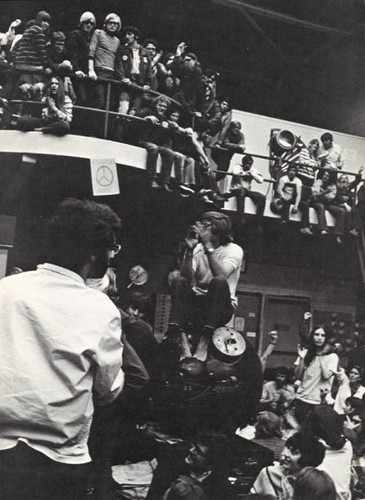
176 Students Arrested
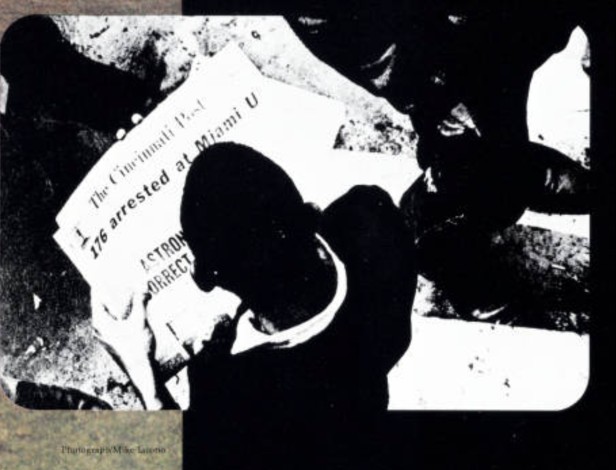
Robert Malone Arrest Photo
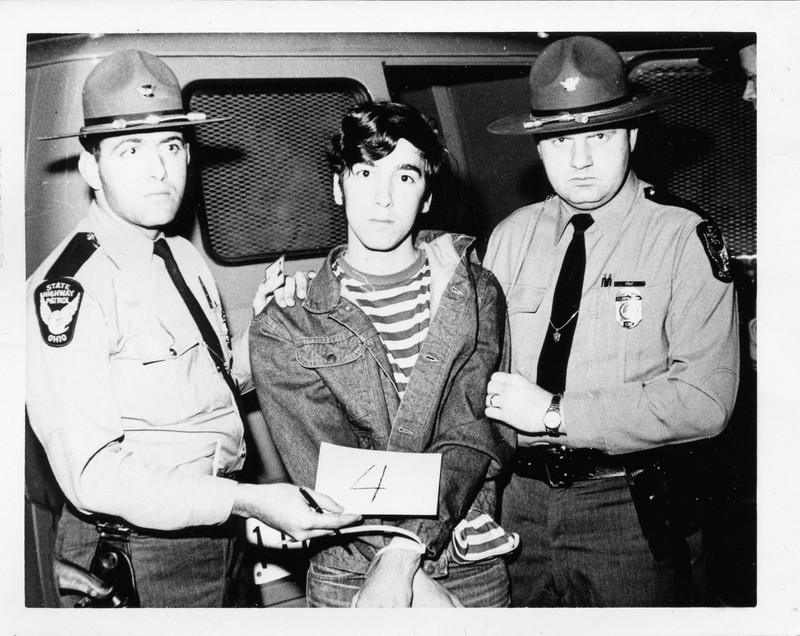
Delta Tau Delta, Robert Malone Participating in Protest
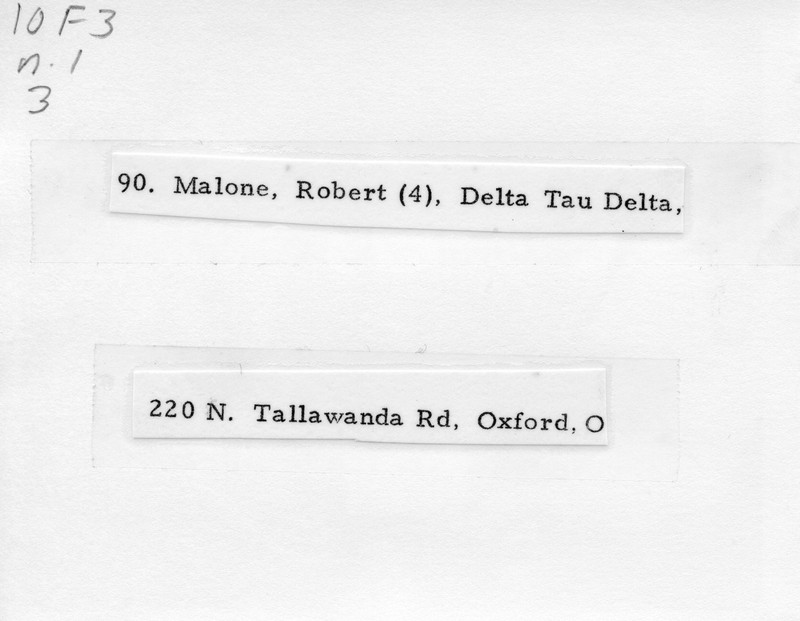
Men in Rowan Hall after student takeover, April 1970
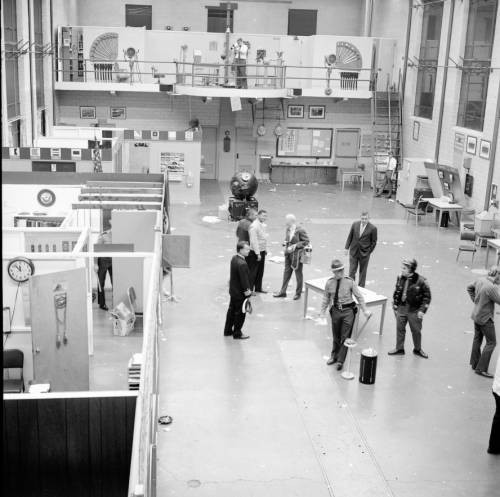
Exterior view of Rowan Hall after student takeover, April 1970
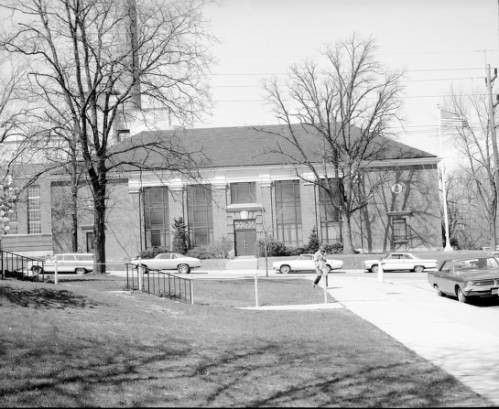
Myra Aronson's arrest photo
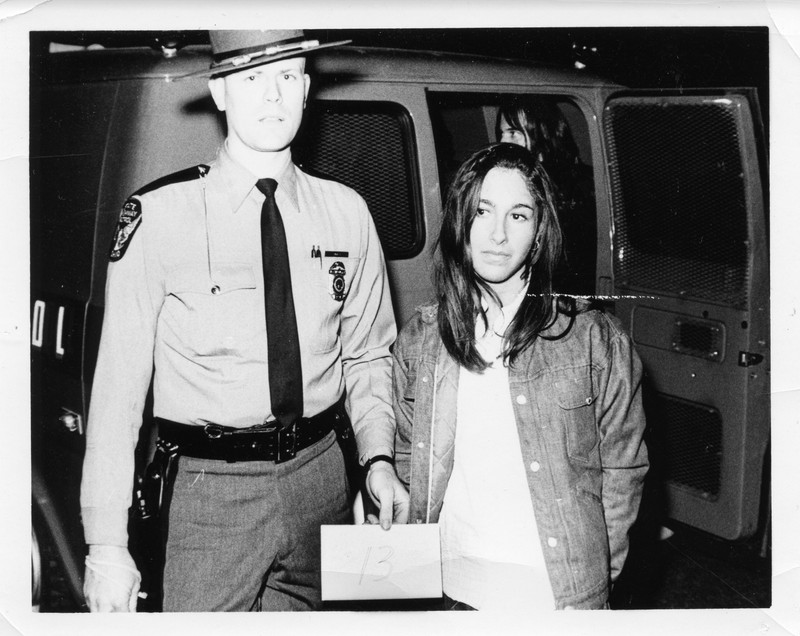
Myra Aronson's participated in the protest
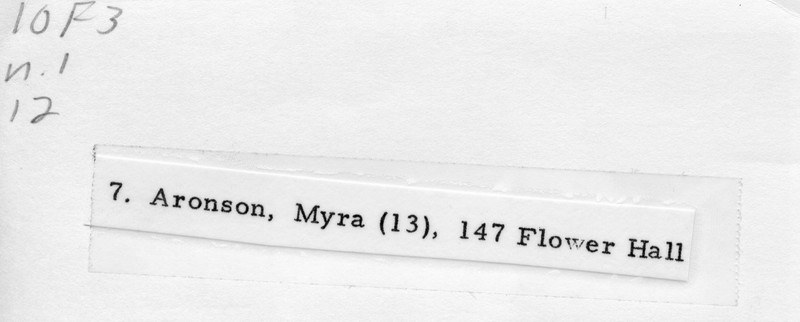
Backstory and Context
Text-to-speech Audio
On April 15th, 1970, a group of 20 students started a rally after breaking into Rowan Hall around 5:00 PM. This break-in, historically known as "The Rowan Hall Takeover", was part of a movement at Miami University surrounding the Vietnam War. However, students of color used this break-in as a chance to have their previously unheard voices heard by the public. The Black Student Action Association (BSAA) joined the protest to fight against racial inequality at Miami University, as they rightly felt that for decades they were treated as less than the white students on campus. There were several thousand students involved in the protest at 9 pm that evening. Vice President Dr. Etheridge asked the students to leave the building. This did not deter the students, who remained in place. He returned around 45 minutes later that night and read a statement to all students involved, informing them that they would be suspended and that the State Highway Patrol was coming due to the fact they were trespassing. In addition to the Patrolmen, Oxford Police, Butler County Sheriff's Department, and 13 other law enforcement agencies arrived at the scene, with an additional 90 officers in riot gear. The Ohio National Guard was on standby just outside of Oxford. After five hours of students protesting in Rowan Hall, law enforcement entered the building and proceeded to arrest 176 students. Students wanted to see results in institutional changes, something they had hoped to see for many years. Students made several specific requests related to the Vietnam War and equality for all students on campus. Following this protest, the Reserve Officers' Training Corps was moved into Millett Hall.
As mentioned above, although the Black Student Action Association did not directly encourage the takeover, they did use it as a catalyst for change. By the late 1960s, only 1% of the Miami University students were Black, and these students faced discrimination - so the Black Student Action Association’s leader, Larry Clark, took charge with formal demands written in a letter to President Shriver. The demands were as follows:
- Extend the educational opportunity for Black students with the goal of reaching 10% of the undergraduate population being Black students in the coming years, and eventually reaching 15% over time.
- Each department should set aside one assistantship for a Black student each year.
- Each academic department should hire at least one Black professor by 1971 and increase the number of employed Black professors in proportion to the department growth.
- All students involved in the takeover should not be penalized
- A committee should be formed to evaluate the ROTC program.
- The Ad Hoc Committee of the Faculty and Council on Human Relations should be reformed to evaluate:
- The Office of Black Student Affairs
- The Educational Opportunity Program
- The Recruitment of Black Faculty
- What has and has not been done to the Ad Hoc report since the last year
In response to the demands above, President Shriver agreed to integrate more Black students into Miami University through the Equal Opportunity Program, as well as designating more scholarships to Black students. As a result of the Black Student Action Association, Miami employed more Black faculty as the 1970s progressed. The fight for equal opportunity and issues surrounding injustice continue today.
Sources
Ellison, Curtis W. Miami University, 1809-2009: Bicentennial Perspectives. Ohio University Press, 2009.
https://www.wvxu.org/post/50-years-later-miami-universitys-tipping-point-rowan-halls-vietnam-war-protest#stream/0
https://etd.ohiolink.edu/apexprod/rws_etd/send_file/send?accession=miami1057759237&disposition=inline
https://digital.lib.miamioh.edu/digital/collection/student/id/3305/rec/14
https://digital.lib.miamioh.edu/digital/collection/p17240coll2/id/19282/rec/9
Miami Recensio 1976 page 363
Miami University Photo Archive
Miami University Photo Archive
https://digital.lib.miamioh.edu/digital/collection/mphoto/id/17671/
https://digital.lib.miamioh.edu/digital/collection/mphoto/id/17603/rec/14
Miami University Archives
Miami University Archives
